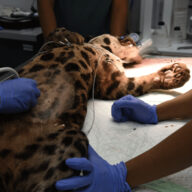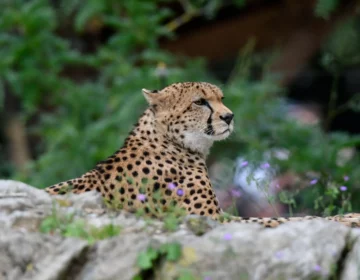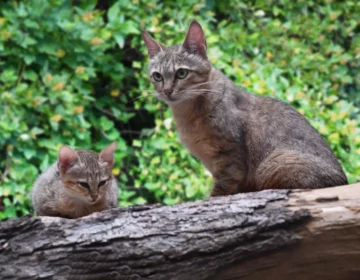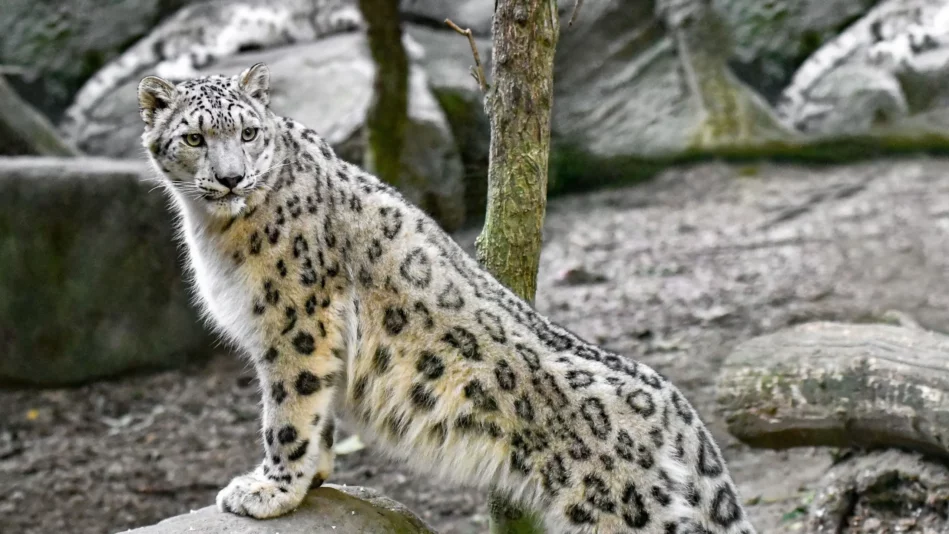
Snow leopard
Panthera uncia
Snow leopard
APPEARANCE
The snow leopard has white-gray or gray-brown fur with dark gray or black spots and rosettes with pale centers, making it great for camouflaging in mountain environments. In winter the fur becomes thick and long providing protection even in extremely cold conditions. Its head, neck, and limbs are black-spotted, with two dark lines extending from its neck to its tail. The snow leopard has light green or gray eyes. It has short rounded ears that are widely spaced, and the back of the ears are black with a light center. The snow leopard is adapted to living at high altitudes. It has an enlarged nasal cavity, short forelegs, and well-developed chest muscles. It has long hind legs and large front paws that allow it to move more easily through the snow. Its fluffy tail is exceptionally long, reaching 1 m in length and making up 75-90% of its total body length. It is believed to help maintain balance on steep slopes.
DISTRIBUTION AND HABITAT
Its occurrence is restricted to the high mountains of Central Asia, including the Altai, Tian Shan, Kun Lun, Pamir, Hindu Kush, Karakorum, and Himalayas within 12 countries: Afghanistan, Bhutan, China, India, Kazakhstan, Kyrgyzstan, Mongolia, Nepal, Pakistan, Russia, Tajikistan and Uzbekistan.
The snow leopard mainly occupies alpine and subalpine zones where it is often found in steep terrain crisscrossed by cliffs, ridges, gorges, and rocky outcrops.
BEHAVIOUR
The snow leopard is a solitary predator and is active mainly at dusk and dawn. It is well adapted to climbing steep and rocky alpine terrain.
Snow leopards communicate primarily through scent marking and scraping. The snow leopard’s vocal folds are less developed than those of other panthers and lack a thick layer of fibrous-elastic tissue, so it cannot make low and intense “roars” like other big cats.
FOOD
The snow leopard feeds primarily on wild sheep and goats, such as mountain nahur (Pseudois nayaur), Siberian goatsucker (Capra sibirica), screw-horn markur (Capra falconeri), wild sheep (Ovis ammon), mountain muskox (Moschus chrysogaster), and Himalayan tar (Hemitragus jemlahicus), and its range closely mirrors that of wild ungulates.
MAIN THREATS
The main threats are competition with livestock, habitat degradation, disappearance of prey, killing in retaliation, and poaching for illegal trade (skins, bones, and other body parts).
